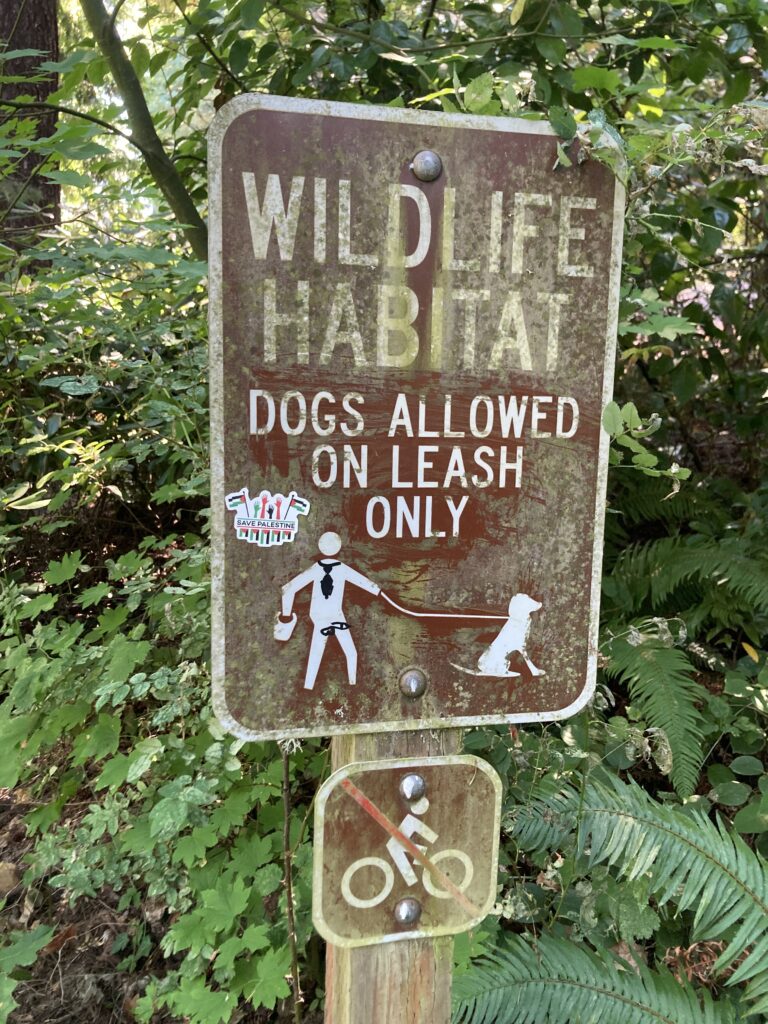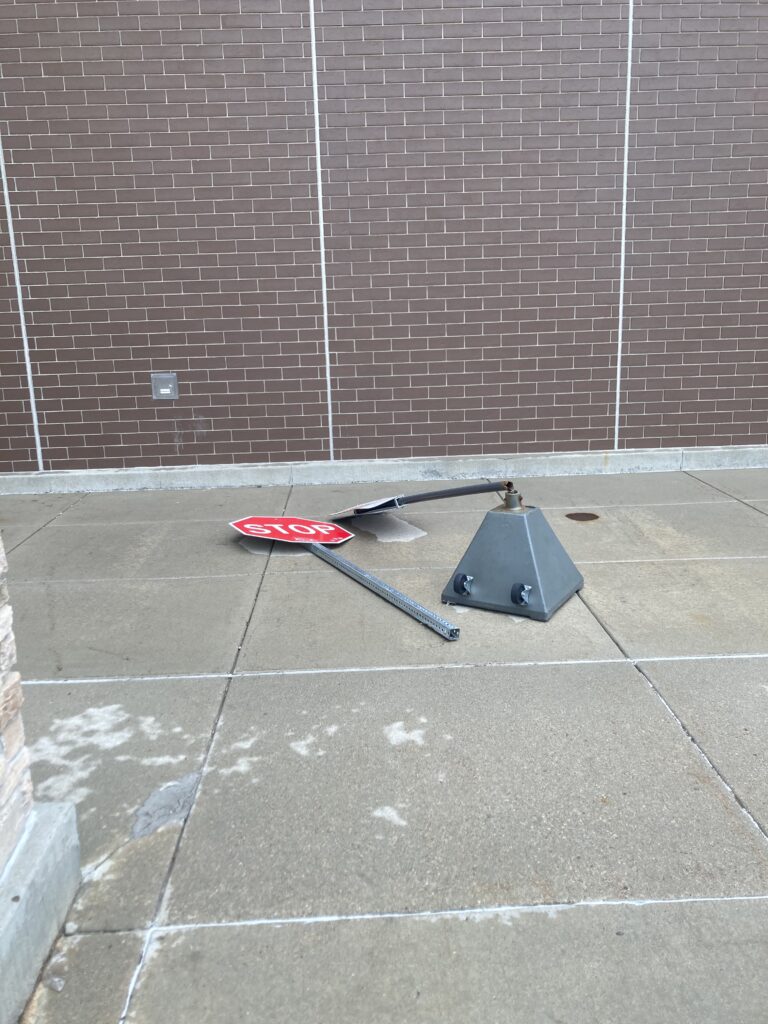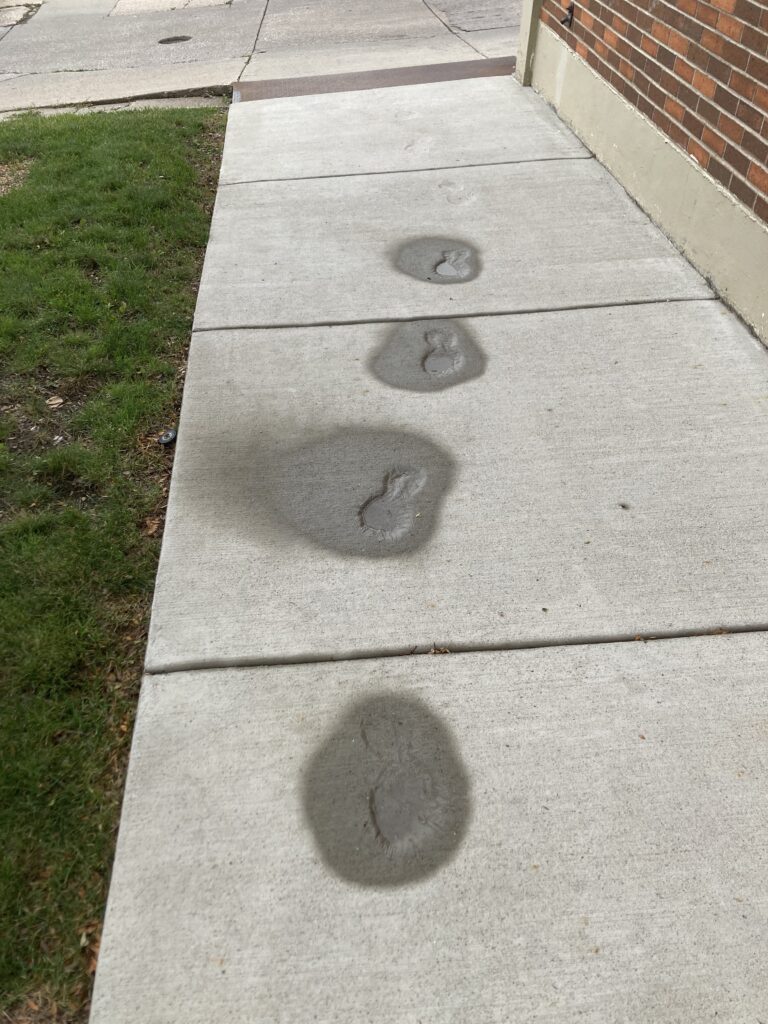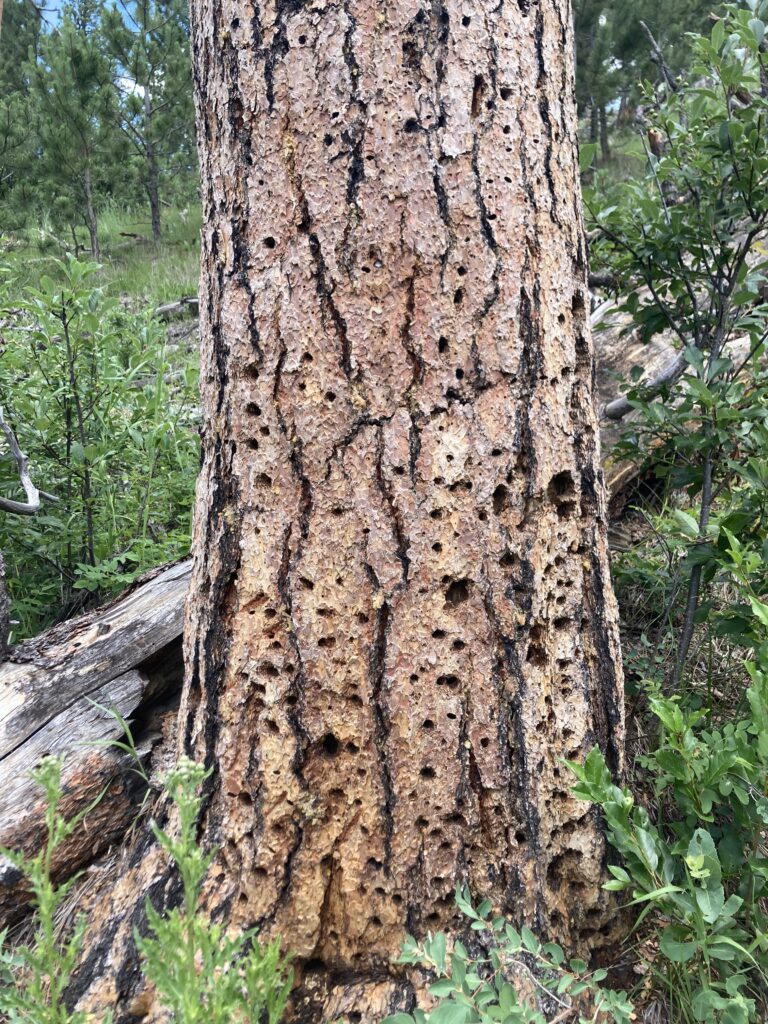
Sometimes I wonder if the bar for entry into the guide isn’t a little low. Take, for instance, ‘The Killing Cord’ of central Utah: a low hanging powerline with faulty jacketing in two hand-distant locations. According to my considerable research, there was nothing particularly interesting about it before its infamy as a place to and means by which to commit suicide. And the fact is, there’s no evidence of any actual suicide taking place there. Like so many satanic-panics and children-eating digital games, the hand-wringing around ‘The Killing Cord’ is likely over a rumor.
A rumor that has been bolstered by a well-meaning local government.
‘You’ll know it’s ‘The Killing Cord’ when you begin to see the warnings. The hotline numbers, yes. Those come first. Then the very concerned PSAs about the danger of electricity to the human body- detailed descriptions about the pain and charring that one might experience upon contacting a live wire. Then: gruesome images, and though the result of electrocution are naturally gruesome, these bear the telltale signs of AI generation: a real ‘what-if’ exaggeration on something already serious by default. And finally, the pièce de résistance: a wire-made human silhouette that, upon the press of a button, will fall forward on ‘The Killing Cord,’ gyrating and sparking and generally causing a scene.
People love it. People love making the fake man do his macabre dance on the wire. It must happen 20 times a day, and crowds gather to cheer and record and generally find little social-media-clips of the ensuing firework show. The installation has been nationally panned. Petitions circulate to have the wire-man retired and replaced with something a bit more serious. The government intervention is widely considered to be a failure.
But.
But nobody has touched ‘The Killing Cord’ since the wire man has been in place. The solemnity of the venue has been stripped, not unlike the sheath of the cord, and there’s always someone around to pull a struggling body from the edge.’
I imagine an expert and a roll of quality electric tape could do what the wire man has accomplished at ‘The Killing Cord’ with a lot less trouble. The wire man’s performace is loud and violent and the air around him is acrid for half an hour after, but I’m won over, in the end, by the way the sparks fall on an unseasonable frost. There’s something to be said for replacing an ugly thing with something prettier.
-traveler
‘As is the habit in academia, it took researchers a great deal of time and money to come to understand what any novice in the field would recognize about Able Forest in Arkansas: it is a statuary for rats. The pieces in ‘The Rat Statuary’ look like rats. They look so much like rats that, prior to the area’s viral popularity, most people were under the impression that it was a place where rats came to die, their bodies stiffening on the ground and drying into mummies for lack of regular precipitation. But, no. The statues are made of twigs and barks and leaves and, yes, sometimes the fur and skin of the dead but never enough to make them bodies, per se. Just effigies.
So, the academic question was never whether or not the statues looked like rats. And it took very little time and a few hunting cameras to confirm that the rats were, indeed, responsible for these creations, so the question was never who was responsible. No, the question that plagued researchers was why?’
Why indeed?
The floor of Able Forest is a mine field of these little rat statues, each one nearly exactly the same in size and pose, differentiated only in execution, really, and in weather-wear. The rats are posed on all fours, each with its head turned up and to the right as though they were made skittish by some sound above them. The effect is uncanny when a predatory bird flies over or when I position myself just right to be the cause of their concern. From that vantage point I can see the little beetle shells or river rocks the artists have installed in the eyes of their creations, mimicking the glossy wetness of a rat’s glance.
I’m not alone in ‘The Rat Statuary’ today. It’s a popular place, relative to other Wayside destinations, but there isn’t much appeal beyond the first few statues and the families have to drag their eldest children through the latter half of the displays, reiterating that not all journeys have social media potential and arguing that a ‘bad vibe’ isn’t reason enough to sit out an opportunity to learn.
For once, I’m with the teens.
‘The Rat Statuary’ has the bad vibe of art made obsessively or as a ward against some intimate evil. Why should these rats feel the need to reproduce this fearful posture again and again? Is it a tribute? A warning? I’ve seen the videos of the rats building and they do not strike me as happy. They do not look like they are at ease.
Some art grants its audience the sadness of its creator and it draws from an infinite supply. It frightens me to think that art could be a vessel- a means by which sickness can be transmitted. These rats seem sick and these statues are the symptom of what ails them.
I decline the dead-eyed plushies at the gift shop, their heads all swerved to the right. I worry about my own art and what it has done to the people who have witnessed it.
– traveler
‘It is a magazine museum. It is a liminal labyrinth. It is ‘The World’s Largest Lobby,’ a title it shares contentiously with a venue in Germany which claims to win by volume (stateside, we win by acreage). One could fill a book with trivia regarding the sheer excess of ‘The WLL.’ It utilizes an amount of electricity that could power a small town toward playing quiet jazz and running an A/C unit just below the level of comfort. It holds the record for the most copies of a single magazine issue in the world: a 1991 copy of ‘Highlights,’ of which at least a thousand have been found. It provides more free water and trashes more plastic cups than the restaurant industry of Wyoming. These facts and more are included in a coffee table book about ‘The WLL,’ several copies of which can be found inside ‘The WLL’ and are, strangely, pictured in images collected in the book though only one edition was ever published.
People get lost in ‘The WLL,’ or, more accurately: people disappear in ‘The WLL.’ The intention of these people is not clear. Some say they run and some suggest it amounts to much the same thing.
As of this writing, one wing of ‘The WLL’ is off limits due to a recent fire (arson). A single body was discovered among the wreckage, unidentifiable, which has driven a lot of people to worry about their personal missing. The body has since been lost. Or, more accurately, it has disappeared. The intention of the people handling the body is not clear.
Some say it’s run, and that’s not the same thing at all.’
-an excerpt, Autumn by the Wayside
‘Nowhere in its advertising does ‘The Air Freshener that Smells Like Death’ suggest it smells like your specific death.
But it does.’
-an excerpt, Autumn by the Wayside
The Mini Moon has been closed to the public for nearly five years while ownership of the moon itself has been under legal review. In that time I, like others, have stolen glimpses of it. The Moon. The big one. I’d guess that the illegality of viewing the moon resulted in a lot more looking all around which, according to fringe voices in the conversation, confirms that it’s all some sort of pro-moon guerilla movement, as though the moon might be wanting for publicity.
The likeliest explanation, in my opinion, is that people are greedy and willing to try anything for a buck. ‘The Mini Moon’ is just the knot in a loophole somebody is trying to exploit.
The guide says it better than I could:
‘Lunar artifacts are, for the most part, in the hands of government agencies and those private firms and individuals the agencies trust. Some have fallen from the sky in a process traders refer to as being ‘naturally transported.’ These specimens are largely considered duds as experts and collectors tend to agree that mystique burns off in the atmosphere.
Some of the good ones have been stolen, though, and that’s where things get interesting.
Beginning in 1990, a commercial aired nationwide, offering cash for certifiable samples of the moon. Just like that, samples began disappearing and approximately a year later ‘The Mini Moon’ formed in New Jersey. No larger than a thumbnail at its outset, ‘The Mini Moon’ has a presence that viewers unanimously describe as ‘unearthly.’ Staged under cold lights and protected by no barrier, this ghostly luminescence was, for many years, all the proof Wayside travelers needed that it was constructed from the real stuff.
And it grew.
By the time the wronged agencies began to wonder if something funny was afoot, ‘The Mini Moon’ had grown to the size of an adult man’s head. It maintained a signature surface, matte white and uncomfortably crater-less, that made it difficult for would be prosecutors to identify. If the owners of ‘The Mini Moon’ were buying stolen specimens, they were going a step further: grinding the rocks into a powder that could be molded into the new sphere.
The first headlines were inflammatory, calling ‘The Mini Moon’ a product of a brash and ongoing heist and indicating the near-pricelessness of moon rocks made it the most valuable take in human history. Still, ‘The Mini Moon’ remained unprotected in its display and this, for most, was an indication that the thing was a fake after all. Nothing worth so much would be left unattended while crowds shuffled by for picture opportunities. And the crowds were still coming- of course they were. On the Wayside, counterfeits, done well, can have just as much merit or more than their originals.
Then, in 2020, when the world faced the pandemic, the federal government took the opportunity to launch a formal investigation, all at once lending ‘The Mini Moon’ more credence than it had ever had. At the time, due to Covid lockdowns, ‘The Mini Moon’ could only be viewed via a public livestream sandwiched between ads. The livestream soon became viral and spawned several lofi-style offshoots that viewsers praised for providing simple peace in tumultuous times.
This same viewership criticized governing bodies for cracking down on a small business owner when the world seemed to be falling apart around them and, in response, the leading committee doubled down and, via complex legal shenanigans, made it temporarily illegal to look at the moon. The public lost its nerve and, like a slapped dog, buried its head in blankets.
Views of the livestream remained steady, however, which allowed the owners of ‘The Mini Moon’ to launch the expensive defense that has kept the issue in limbo up through the time of this guide’s publication.
‘The Mini Moon’ may be shuttered by the time you read this page, traveler. Do your research and keep your eyes down.’
‘The Mini Moon’s’ grand reopening was a week ago but, by the time I reach the warehouse that contains it, the crowds have largely dispersed. I wait in a 30-minute line before I’m ushered inside. The people ahead of me gasp as they enter and I’m still surprised by what I see: ‘The Mini Moon’ not so mini, now the size of a turn-of-the-century VW Bug and glowing grey-blue. It is difficult to describe why I know it is the moon, but I do. They’ve been collecting, all this time, more pieces of moon than should exist on earth.
No wonder the government has questions.
I welcome belligerence from the small business community in theory, but I also worry about exposure. The Wayside has been a haven for me in a country that is largely hostile. The less the government thinks about us off the shoulder of the highway, the better.
-traveler
Rear View Mirror
- November 2025
- October 2025
- September 2025
- August 2025
- July 2025
- June 2025
- May 2025
- April 2025
- March 2025
- February 2025
- January 2025
- December 2024
- November 2024
- October 2024
- September 2024
- August 2024
- July 2024
- June 2024
- May 2024
- April 2024
- March 2024
- February 2024
- January 2024
- December 2023
- November 2023
- October 2023
- September 2023
- August 2023
- July 2023
- June 2023
- May 2023
- April 2023
- March 2023
- February 2023
- January 2023
- December 2022
- November 2022
- October 2022
- September 2022
- August 2022
- July 2022
- June 2022
- May 2022
- April 2022
- March 2022
- February 2022
- January 2022
- December 2021
- November 2021
- October 2021
- September 2021
- August 2021
- July 2021
- June 2021
- May 2021
- April 2021
- March 2021
- February 2021
- January 2021
- December 2020
- November 2020
- October 2020
- September 2020
- August 2020
- July 2020
- June 2020
- May 2020
- April 2020
- March 2020
- February 2020
- January 2020
- December 2019
- November 2019
- October 2019
- September 2019
- August 2019
- July 2019
- June 2019
- May 2019
- April 2019
- March 2019
- February 2019
- January 2019
- December 2018
- November 2018
- October 2018
- September 2018
- August 2018
- July 2018
- June 2018
- May 2018
- April 2018
- March 2018
- February 2018
- January 2018
- December 2017
- November 2017
- October 2017
- September 2017
- August 2017
- July 2017
- June 2017
- May 2017
- April 2017
- March 2017
- February 2017
- January 2017
- December 2016
- November 2016
- October 2016
- September 2016
- August 2016




